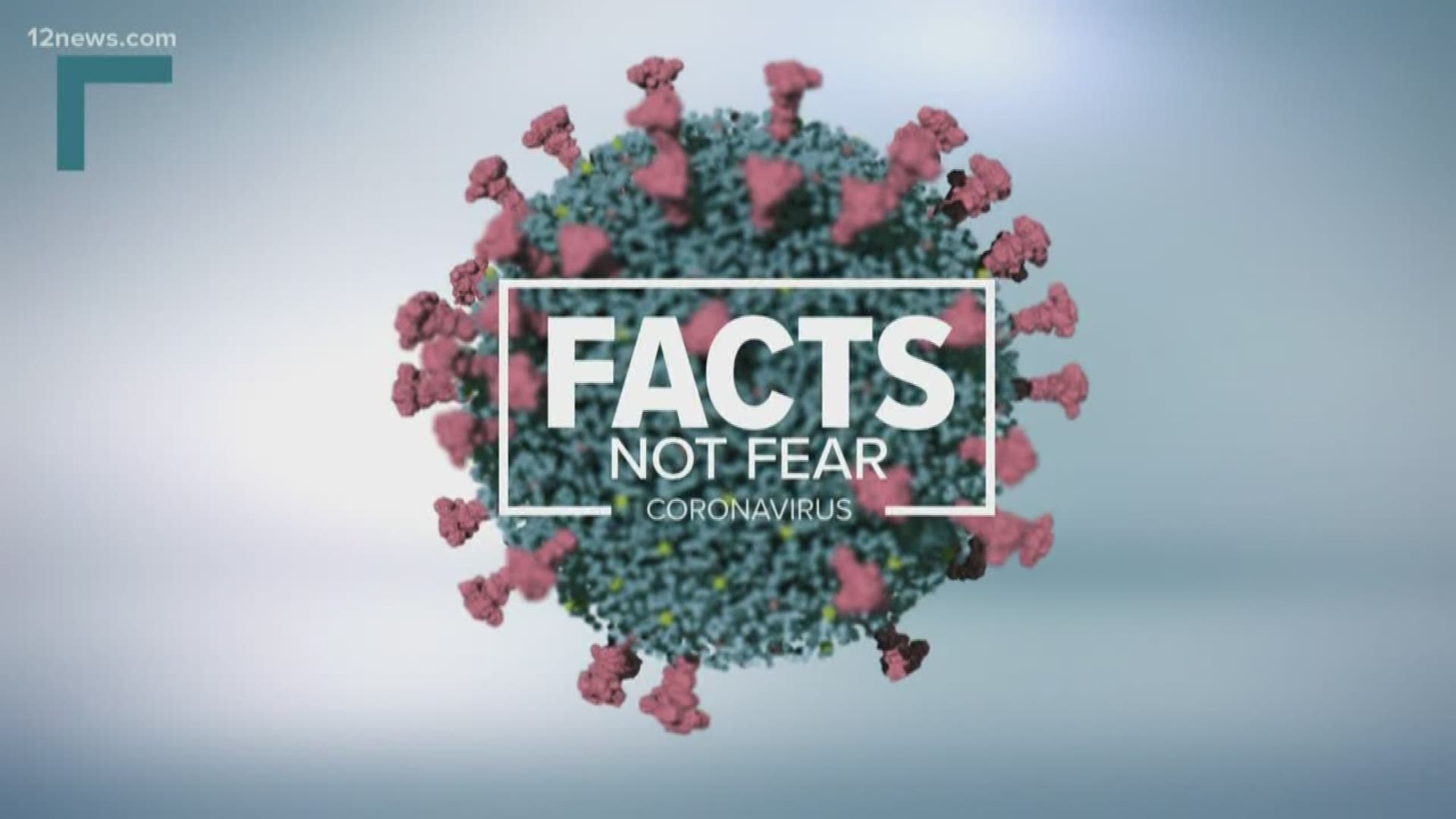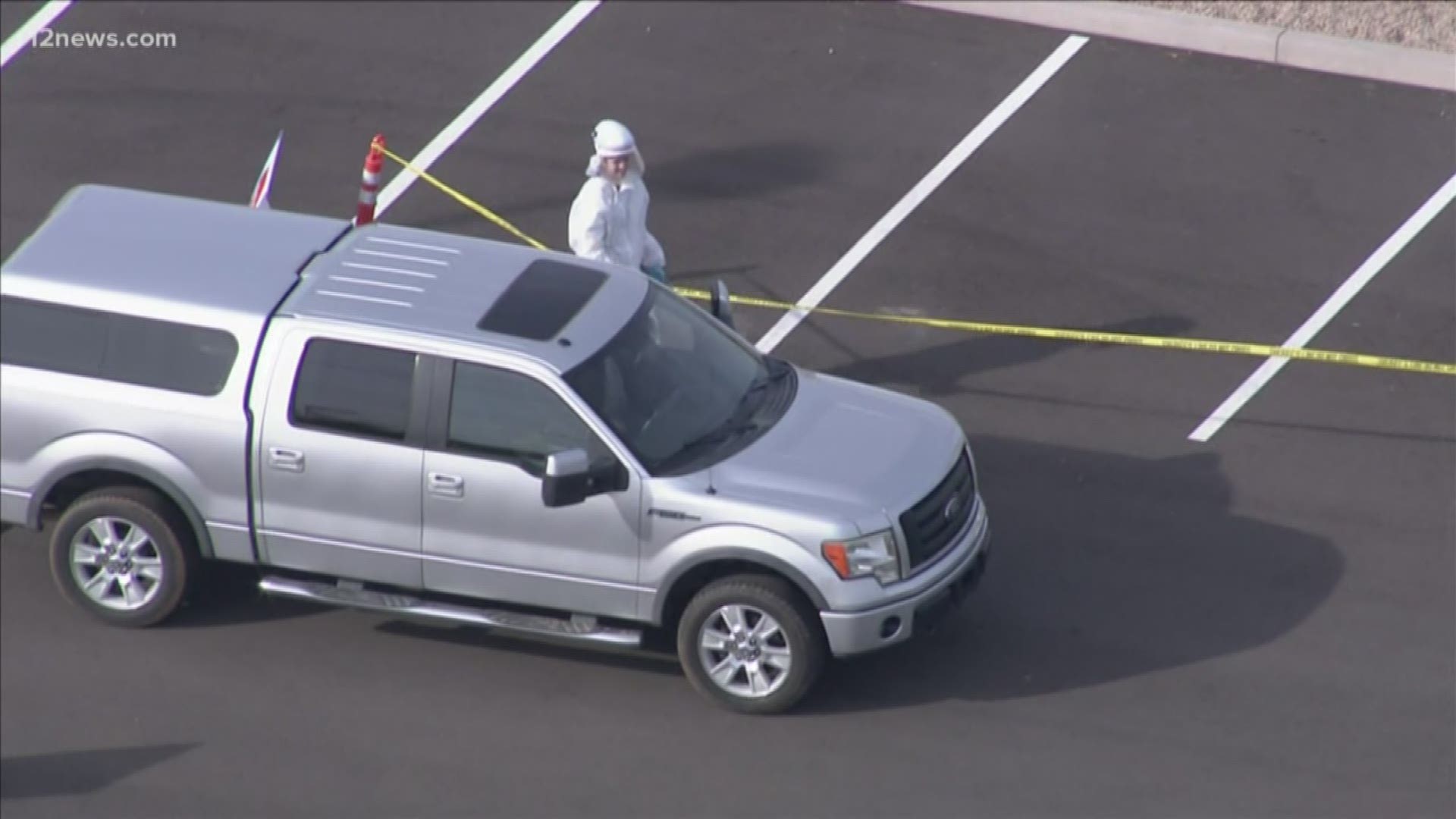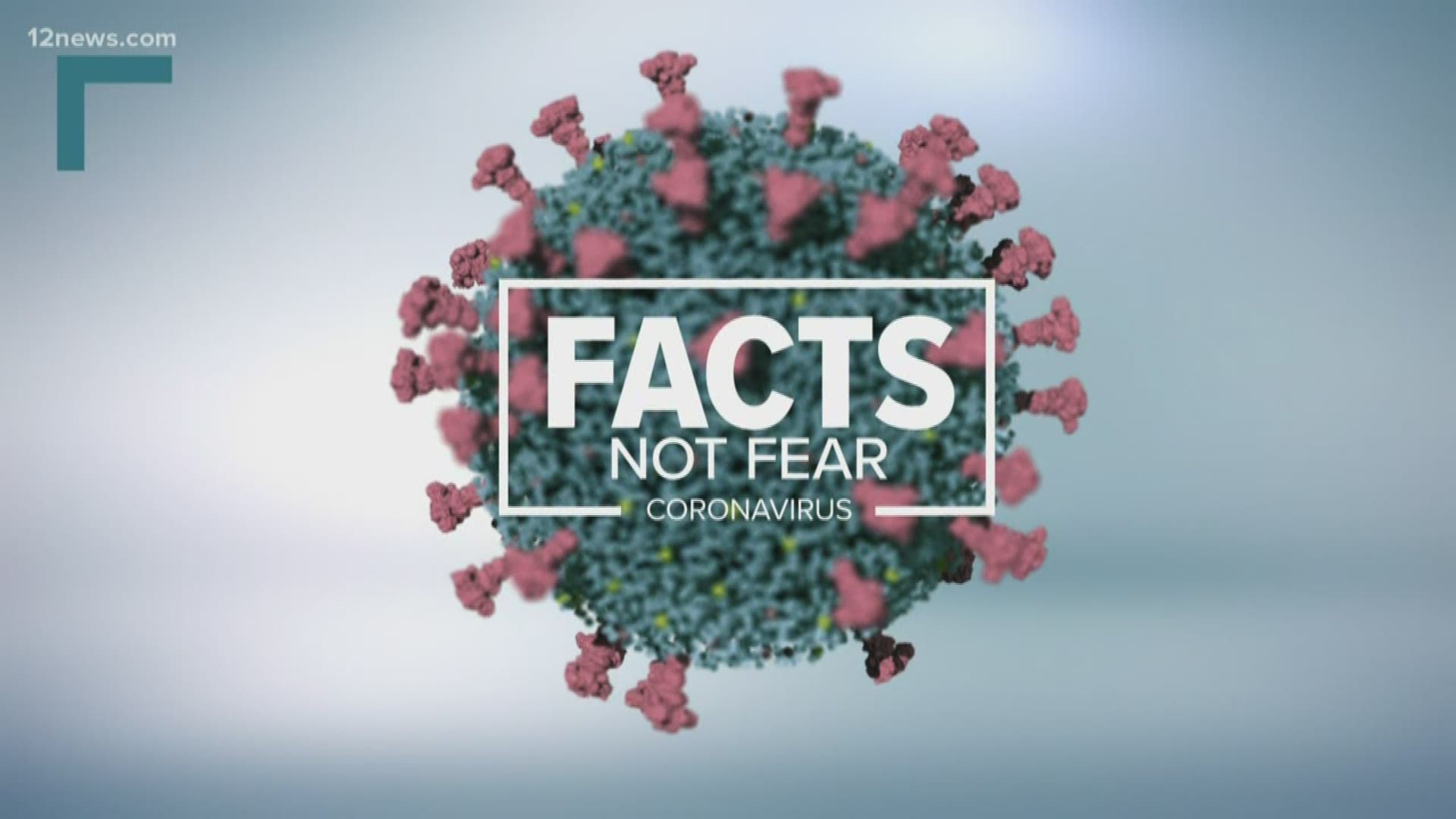PHOENIX — The number of coronavirus cases in Arizona is going to "sky rocket" in the coming days and weeks, according to a Maricopa County health care official.
Dr. Rebecca Sunenshine, the medical director for disease control, said in a letter that cases will rise because "commercial test results are just starting to come back, and testing for people with mild to moderate symptoms is finally available."
The letter to to county health care providers also stated that "these cases have been in the community for a while. Public Health is relying on a combination of surveillance methods to understand disease spread in the community — case counts are only one aspect of that surveillance."
The letter was dated March 16 but was released to the public on Tuesday, the same day that the number of coronavirus cases in Arizona jumped to 20, from 18 the day prior.
Below is Sunenshine's letter in full:
March 16, 2020
Dear Maricopa County Healthcare Providers:
I wanted to reach out to talk about some issues that have been raised by the healthcare community in Maricopa County regarding COVID-19 and to tell you what things will look like over the coming weeks for public health. I apologize that this note is so long but it is important we are on the same page. There is a lot of information coming from many different sources, and it is a struggle for all of us to keep up on the recommendations from the federal, state, and county levels, never mind keeping up on the COVID-19 literature, so allow me to provide a brief overview.
I want to start by addressing two issues that have generated a lot of concern among healthcare providers and the public.
What is the role of asymptomatic spread of COVID-19 in this pandemic?
Here are my thoughts. We know there is some asymptomatic spread. There are several published reports of asymptomatic spread, so we know it can happen. At least one published report from China reported apparent transmission from someone who never developed symptoms, although they make some questionable assumptions in this paper. Bottom line is that it happens — just like it can with influenza. However, just like with flu, the evidence supports that effectively isolating symptomatic individuals, along with social distancing, hand washing and other basic infection control measures, are effective and that asymptomatic transmission is not the driving force of the outbreak.
The bottom line is that there is enough spread in Maricopa County that everyone should assume they have had some contact with a person with COVID-19. If we focus on asymptomatic transmission, we would have to put every person in Maricopa County in quarantine or isolation. That is not feasible and would shut the county down. As healthcare providers, our job is to focus on 1) ensuring that symptomatic persons remain isolated to prevent the majority of disease spread and 2) making sure people know how to protect themselves.
People who are healthy can go to work and do what they need to do, but should avoid any unnecessary physical contact with other people. So, in addition to avoiding sick people and touching their face, covering coughs and sneezes, and frequent hand hygiene, we all need to stop shaking hands, hugging and kissing (outside of our immediate families) until we're past this. It just makes sense, and society can keep going without those things.
People at high risk for severe illness from COVID-19 (those over 60 years or who have chronic medical conditions) need to do all the prevention measures mentioned above AND stay away from groups (over 10 people) and sick people. Generally, they should limit their social activities to being with a few healthy people at a time. That recommendation stands for at least 8 weeks, or until we get through this outbreak.
How severe is COVID-19 relative to influenza?
Ever since Dr. Fauci announced that COVID-19 is “10 times more lethal” than seasonal influenza, everyone started to panic. Now there is no toilet paper. Let's look at the facts. The only objective data we have are crude mortality rates — that means taking the total number of deaths and dividing it by the total number of laboratory-confirmed cases. The best population-based data we have is from China, which has published two crude mortality rates of 1.4% and 2.3%. We know these numbers represent substantial overestimates of the mortality rate because they don't include asymptomatic persons and those with mild to moderate illness who didn't get tested. That is the consensus, despite any lag in outcome reporting.
All of the influenza mortality rates that we use are estimated mortality rates which take into account those who are not tested. That estimate is around 0.1-0.2%. We cannot compare crude mortality rates of COVID-19 to influenza mortality estimates that include mild and asymptomatic disease. That is bad science. So, we have to rely on mortality estimates for COVID-19 that include undiagnosed cases. Those are wide ranging and are just estimates but fall between 0.25%–3.0%.
Authors suggest that the higher mortality risk in that range is more likely to apply to low resource settings without sufficient access to intensive care. The best estimate from China is 0.9% (95% CI 0.6%–1.3%) but that is also believed to be high because China had a shortage of testing kits and could not diagnose all those who were mildly ill. South Korea, which has done more testing than likely any other country, has a reported mortality of 0.6% and Italy, which is also doing a lot of testing, reports nearly 4.0%.
Bottom line is that we don't know the mortality and won't know until this is over. Because of the high level of intensive care and the relatively low levels of COVID-19 testing in the US, I believe the mortality will fall below 1%, likely around 0.6% as in South Korea. That is 3-6 times the estimated mortality for influenza, but most of that will disproportionately affect people over 60 and those with chronic medical conditions.
That is why I want all of us to focus our efforts on protecting the most vulnerable, who will have the highest likelihood of dying from this disease. Please message to people over 60 and those with chronic medical conditions to stay away from sick people and gatherings in general, wash their hands and not touch their face, avoid physical contact with strangers, and to call their healthcare provider if they are ill.
Also, please tell them that even if they have mild illness in the first week, we see people decline around day 8 after symptom onset, so they are not out of the woods until that second week has passed.
What can we expect in the coming days to weeks?
Case counts are going to sky rocket. Not because there are more cases but because commercial test results are just starting to come back, and testing for people with mild to moderate symptoms is finally available. These cases have been in the community for a while. Public Health is relying on a combination of surveillance methods to understand disease spread in the community — case counts are only one aspect of that surveillance.
Public Health is using CDC's Community Mitigation Guidelines as a guide for its public health response. We are currently experiencing "minimal to moderate" spread in Maricopa County. That is why we recommended cancelling non-essential gatherings over 50 people.
Public Health will be streamlining its processes as more people test positive. Right now, we are doing extensive interviews and contact investigations for each case. As more cases are reported, we will be doing shorter interviews with cases to prioritize contact investigations for those who live in high-risk settings such as long-term care facilities, jails, or other communal settings. We will also be using alternate methods to notify facilities and close contacts of exposure to COVID-19, including letters and e-mail.
Healthcare facilities will find ways to conserve Personal Protective Equipment (PPE) including cancelling elective surgeries. Some have already done this.
Emergency departments will get overrun as they do every year during flu season. Public Health will message to try and get people with milder illness to stay home.
We may see a shortage of ICU beds and ventilators. We need to look at our healthcare facility plans for alternate standards of care now.
I sincerely hope that we will not get to #6 if we practice enough social distancing, but we have to wait and see. In the meantime, I appreciate you providing accurate information to your patients and helping them to remain calm. The more we tell people what they can do to protect themselves instead of focusing on what they can't do, the more in control people will feel.
We are all in this together and we are committed to supporting our healthcare partners. We will continue to have weekly webinars with updated information each Tuesday at 11 am. You can register here. I will also do my best to provide written updates like this one as often as I am able.
Thank you for all you do to support public health.
Stay healthy,
Rebecca Sunenshine, MD
CAPT, USPHS
CDC Career Epidemiology Field Officer
Medical Director, Disease Control Division
Maricopa County Department of Public Health
(602) 568-2250



